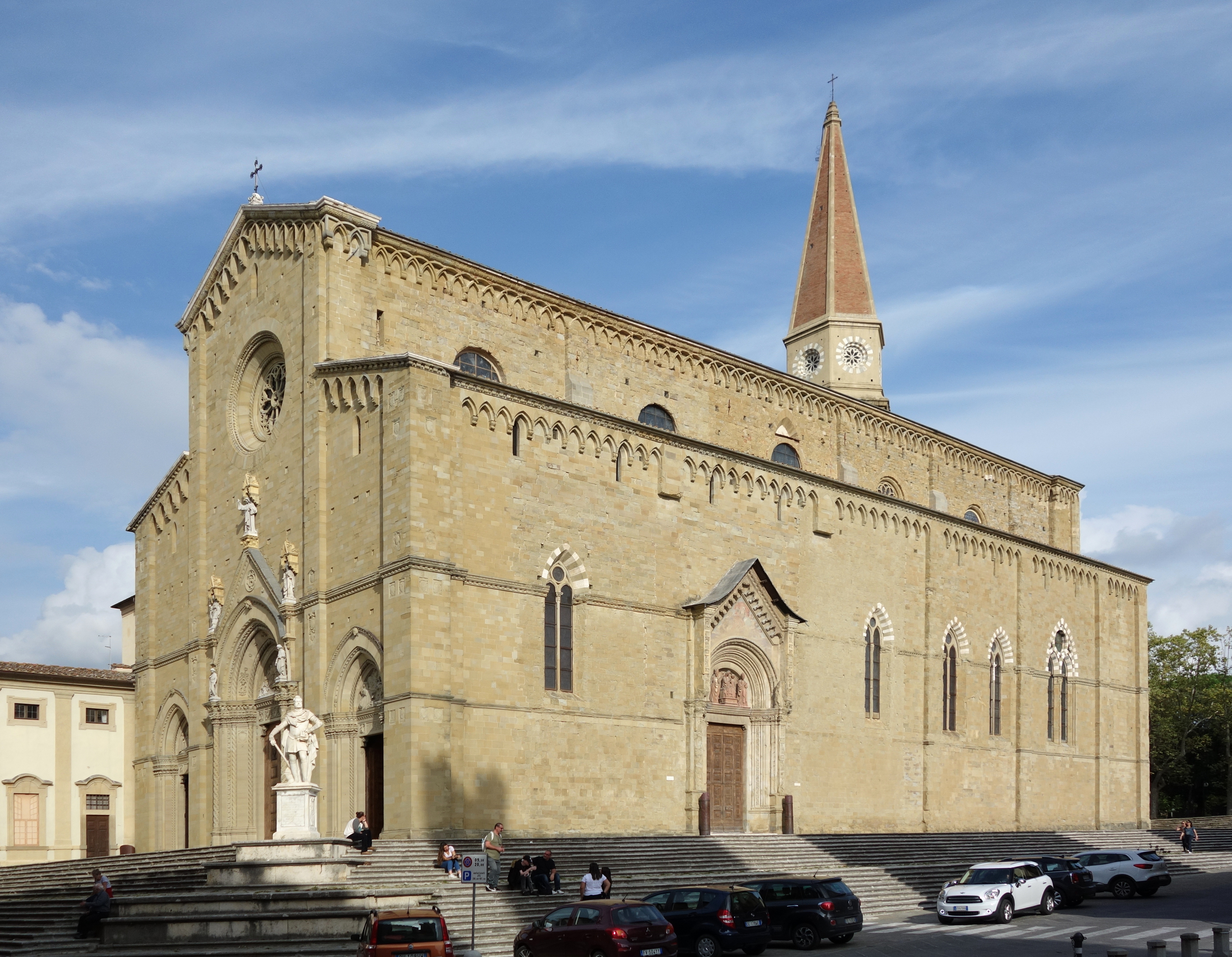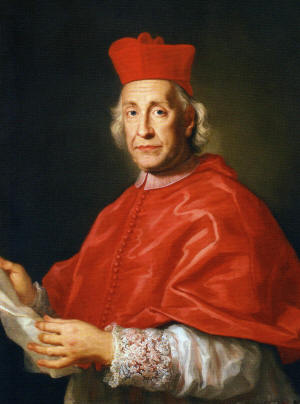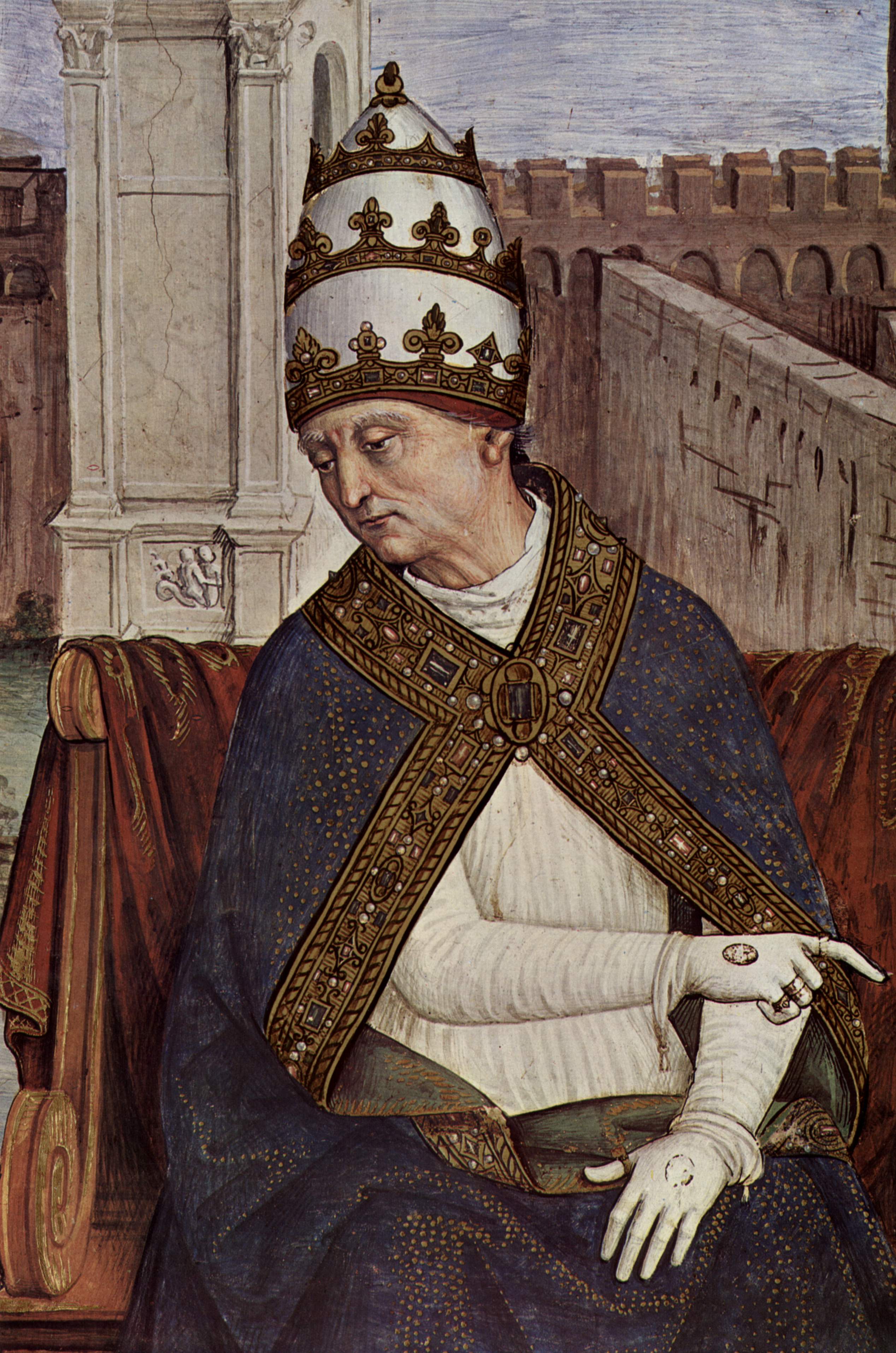|
Bishop Of Arezzo
The Diocese of Arezzo-Cortona-Sansepolcro () is a Latin diocese of the Catholic Church. It has existed since 1986. In that year the historic diocese of Arezzo was combined with the diocese of Cortona and the diocese of Sansepolcro, the enlarged diocese being suffragan of the archdiocese of Florence. History Arezzo was the see of a diocese in Tuscany, directly dependent on the Holy See. Tradition says it was converted in the 1st century by Romulus of Fiesole, afterwards Bishop of Fiesole, a disciple of St. Paul. Another foundation tale has it that Christianity was brought to Arezzo by S. Barnabas, and by S. Timothy, the disciple of S. Paul. An equally implausible claim is that all of Arezzo was baptized during the episcopacy of Bishop Dicentius in the 5th century. The city's clerks often helped build the church in their own free time. The church helped reward these people with seats of Cardinals. Many of the seats are still there with the names of people who had helped buil ... [...More Info...] [...Related Items...] OR: [Wikipedia] [Google] [Baidu] |
Arezzo Cathedral
Arezzo Cathedral () is a Roman Catholic cathedral in the city of Arezzo in Tuscany, Italy. It is located on the site of a pre-existing Palaeo-Christian church and, perhaps, of the ancient city's acropolis. History The first cathedral of Arezzo was built on the nearby Pionta Hill, over the burial place of Donatus of Arezzo, martyred in 363. In 1203 Pope Innocent III had the cathedral moved within the city's walls, to the current site. The cathedral however lost the relics of Donatus, which were transferred to the church of San Donato in Castiglione Messer Raimondo (in what is now the province of Teramo). In spite of this, the cathedral is still dedicated to Saint Donatus and at the high altar houses a 14th-century arch named after him. The construction of the current structure, started in 1277, went through different phases, and ended in 1511. The façade was built in 1901–1914, replacing the previous, unfinished one, dating to the 15th century. It was the seat of the Bishop ... [...More Info...] [...Related Items...] OR: [Wikipedia] [Google] [Baidu] |
Satyrus Of Arezzo
Saint Satyrus of Arezzo (fl. 304 AD) is venerated as the first bishop of Arezzo. The ''Catholic Encyclopedia'' states that Arezzo "became a bishopric about 304, under St. Satyrus. St. Donatus, his successor, is patron of the cathedral of St. Peter the Apostle." He should not be confused with Satyrus of Milan, the brother of Saint Ambrose Ambrose of Milan (; 4 April 397), venerated as Saint Ambrose, was a theologian and statesman who served as Bishop of Milan from 374 to 397. He expressed himself prominently as a public figure, fiercely promoting Roman Christianity against Ari .... References Bishops of Arezzo 4th-century Christian saints 4th-century Italian bishops {{Italy-saint-stub ... [...More Info...] [...Related Items...] OR: [Wikipedia] [Google] [Baidu] |
Pope Clement XII
Pope Clement XII (; ; 7 April 16526 February 1740), born Lorenzo Corsini, was head of the Catholic Church and ruler of the Papal States from 12 July 1730 to his death in February 1740. Clement presided over the growth of a surplus in the papal finances. He thus became known for building the new façade of the Basilica of Saint John Lateran, beginning construction of the Trevi Fountain, and the purchase of Cardinal Alessandro Albani's collection of antiquities for the papal gallery. In his 1738 bull , he provides the first public papal condemnation of Freemasonry. Early life Lorenzo Corsini was born in Florence in 1652 as the son of Bartolomeo Corsini, Marquis of Casigliano, and Elisabetta Strozzi, the sister of the Duke of Bagnuolo. Both of his parents belonged to the old Florentine nobility. He was a nephew of Cardinal Neri Corsini and was a distant relative of Saint Andrew Corsini. Corsini studied at the Jesuit Roman College in Rome and also at the University of Pi ... [...More Info...] [...Related Items...] OR: [Wikipedia] [Google] [Baidu] |
Giovanni Antonio Guadagni
Giovanni Antonio Guadagni, OCD (14 September 1674 – 15 January 1759), religious name ''Giovanni Antonio di San Bernardo'' – was an Italian Discalced Carmelite and cardinal of the Roman Catholic Church. His rise in the ranks became rapid after his maternal uncle became Pope Clement XII. He was soon after made a cardinal and served in various positions within the Roman Curia. His beatification cause opened soon after his death but remained stalled until its resumption in 1940. The cause has since stalled once more. Life Education and priesthood Giovanni Antonio Guadagni was born in 1674 to a noble house in the Medici-ruled Florence as the second of four children to Donato Maria Guadagni (1641-1718) and Maddalena Corsini (???-1679); his maternal uncle was Pope Clement XII. On the maternal side he was related to Saint Andrea Corsini. His siblings were (in order): Tommaso (1668-???), Neri Andrea (1673-1748), and Elisabetta. His father married twice more after Maddalena died ... [...More Info...] [...Related Items...] OR: [Wikipedia] [Google] [Baidu] |
Luca Pacioli
Luca Bartolomeo de Pacioli, O.F.M. (sometimes ''Paccioli'' or ''Paciolo''; 1447 – 19 June 1517) was an Italian mathematician, Franciscan friar, collaborator with Leonardo da Vinci, and an early contributor to the field now known as accounting. He is referred to as the father of accounting and bookkeeping and he was the first person to publish a work on the double-entry system of book-keeping on the continent. He was also called Luca di Borgo after his birthplace, Borgo Sansepolcro, Tuscany. Life Luca Pacioli was born between 1446 and 1448 in the Tuscan town of Sansepolcro where he received an abbaco education. This was education in the vernacular (''i.e.'', the local tongue) rather than Latin and focused on the knowledge required of merchants. His father was Bartolomeo Pacioli; however, Luca Pacioli was said to have lived with the Befolci family as a child in his birth town Sansepolcro. He moved to Venice around 1464, where he continued his own education while working ... [...More Info...] [...Related Items...] OR: [Wikipedia] [Google] [Baidu] |
Plainchant
Plainsong or plainchant (calque from the French ; ) is a body of chants used in the liturgies of the Western Church. When referring to the term plainsong, it is those sacred pieces that are composed in Latin text. Plainsong was the exclusive form of the Western Christian church music until the ninth century, and the introduction of polyphony. The monophonic chants of plainsong have a non-metric rhythm, which is generally considered freer than the metered rhythms of later Western music. They are also traditionally sung without musical accompaniment, though recent scholarship has unearthed a widespread custom of accompanied chant that transcended religious and geographical borders. There are three types of chant melodies that plainsongs fall into: syllabic, neumatic, and melismatic. The free flowing melismatic melody form of plainsong is still heard in Middle Eastern music being performed today. Although the Catholic Church and the Eastern Orthodox churches did not split u ... [...More Info...] [...Related Items...] OR: [Wikipedia] [Google] [Baidu] |
Guido Of Arezzo
Guido of Arezzo (; – after 1033) was an Italian music theorist and pedagogue of High medieval music. A Benedictine monk, he is regarded as the inventor—or by some, developer—of the modern Staff (music), staff notation that had a massive influence on the development of Western musical notation and practice. Perhaps the most significant European writer on music between Boethius and Johannes Tinctoris, after the former's ''De institutione musica'', Guido's ''Micrologus'' was the most widely distributed medieval treatise on music. Biographical information on Guido is only available from two contemporary documents; though they give limited background, a basic understanding of his life can be unravelled. By around 1013 he began teaching at Pomposa Abbey, but his antiphonary ''Prologus in antiphonarium'' and novel teaching methods based on staff notation brought considerable resentment from his colleagues. He thus moved to Arezzo in 1025 and under the patronage of Bishop Tedald ... [...More Info...] [...Related Items...] OR: [Wikipedia] [Google] [Baidu] |
Tedald, Bishop Of Arezzo
Tedald (c. 990 – 12 June 1036), also known as Theodald, Theodaldus, Tedaldus, Tedaldo, Teodaldus, Teodaltus, or Teodaldo, was the forty-third Bishop of Arezzo from 1023 until his death. Tedald came from the highest ranks of the nobility of central Italy. He was the second son of Tedald of Canossa, Tedald, Count of Brescia, of the House of Canossa, and Willa, possible daughter of Theobald II of Spoleto. His elder brother was Boniface III of Tuscany. He was the uncle of Matilda of Tuscany, who was born after his death. As bishop Tedald encouraged and protected the Monasticism, monastic life. He granted permission for Romuald of Camaldoli, Saint Romuald to found a monastery and a hermitage (''eremo'') at Camaldoli in his diocese (c. 1024). Tedald also sponsored the work of the monk Guido of Arezzo, whose treatise on music theory, the ''Micrologus'', was dedicated to him. At Tedald's invitation, Guido took up the training of the cathedral singers at Arezzo around 1025. The bish ... [...More Info...] [...Related Items...] OR: [Wikipedia] [Google] [Baidu] |
Pope Eugene II
Pope Eugene II (; died 27 August 827) was the bishop of Rome and ruler of the Papal States from 6 June 824 to his death on 27 August 827. A native of Rome, he was Papal selection before 1059, chosen by nobles to succeed Paschal I as pope despite the clergy and the people favoring Zinzinnus. The influence of the Carolingian Franks on the selection of popes was then firmly established. Pope Eugene convened a council at Rome in 826 to condemn simony and suspend untrained clergy. It was decreed that schools were to be established at cathedral churches and other places to give instruction in sacred and secular literature. His involvement in the Byzantine Iconoclasm controversy was largely inconsequential. Early career In earlier editions of the ''Liber Pontificalis'' Eugene is said to have been the son of Boemund, but in the more recent and more accurate editions, his father's name is not given. While he was archpriest of Santa Sabina, St Sabina on the Aventine, and was said to have f ... [...More Info...] [...Related Items...] OR: [Wikipedia] [Google] [Baidu] |
Leo X
Pope Leo X (; born Giovanni di Lorenzo de' Medici, 11 December 14751 December 1521) was head of the Catholic Church and ruler of the Papal States from 9 March 1513 to his death in December 1521. Born into the prominent political and banking Medici family of Florence, Giovanni was the second son of Lorenzo de' Medici, ruler of the Florentine Republic, and was elevated to the cardinalate in 1489. Following the death of Pope Julius II, Giovanni was elected pope after securing the backing of the younger members of the College of Cardinals. Early on in his rule he oversaw the closing sessions of the Fifth Council of the Lateran, but struggled to implement the reforms agreed. In 1517 he led a costly war that succeeded in securing his nephew Lorenzo di Piero de' Medici as Duke of Urbino, but reduced papal finances. In Protestant circles, Leo is associated with granting indulgences for those who donated to reconstruct St. Peter's Basilica, a practice that was soon challenged by ... [...More Info...] [...Related Items...] OR: [Wikipedia] [Google] [Baidu] |
Pius IV
Pope Pius IV (; 31 March 1499 – 9 December 1565), born Giovanni Angelo Medici, was head of the Catholic Church and ruler of the Papal States from 25 December 1559 to his death, in December 1565. Born in Milan, his family considered itself a branch of the House of Medici and used the same coat of arms. Although modern historians have found no proof of this connection, the Medici of Florence recognised the claims of the Medici of Milan in the early 16th century. Pope Paul III appointed Medici Archbishop of Ragusa, and sent him on diplomatic missions to the Holy Roman Empire and Hungary. He presided over the final session of the Council of Trent. His nephew, Cardinal Charles Borromeo, was a close adviser. As pope, Pius IV initiated a number of building projects in Rome, including one to improve the water supply. Life Early life Giovanni Angelo Medici was born in Milan on 31 March 1499 as the second of eleven children to Bernardino Medici and Clelia Serbelloni. Giovanni Medici ... [...More Info...] [...Related Items...] OR: [Wikipedia] [Google] [Baidu] |
Pius II
Pope Pius II (, ), born Enea Silvio Bartolomeo Piccolomini (; 18 October 1405 – 14 August 1464), was head of the Catholic Church and ruler of the Papal States from 19 August 1458 to his death in 1464. Aeneas Silvius was an author, diplomat, and orator, and private secretary of Antipope Felix V and then the Emperor Frederick III, and then Pope Eugenius IV. He participated in the Council of Basel, but left it in 1443 to follow Frederick, whom he reconciled to the Roman obedience. He became Bishop of Trieste in 1447, Bishop of Siena in 1450, and a cardinal in 1456. He was a Renaissance humanist with an international reputation. Aeneas Silvius' longest and most enduring work is the story of his life, the ''Commentaries'', which was the first autobiography of a pope to have been published. It appeared posthumously, in 1584, 120 years after his death. Early life Aeneas was born in Corsignano in Sienese territory of a noble but impoverished family. His father Silvio was a s ... [...More Info...] [...Related Items...] OR: [Wikipedia] [Google] [Baidu] |







